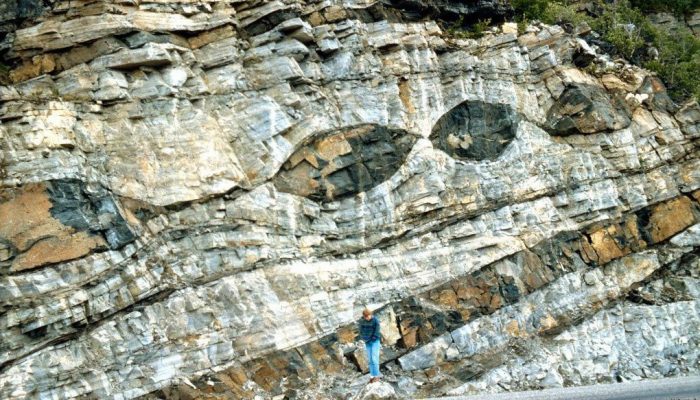
The Features from the Field series is back! In our previous posts, we have shown how rocks can deform during ductile deformation, producing folds. Folds very commonly develop in rocks when rock layers are shortened by tectonic forces in a specific direction. On the other hand, when layers are extended, we develop boudins.

Saucisson is a dry cured sausage (boudin) from France. Did you know that geology is full of food analogies? Indeed, we love barbecues. Photo credits © Nate Grey (Flickr)
Boudins – the term comes from the French word for ‘sausage’ – are fragments of original layers that have been stretched and segmented. They develop in layers that are stronger and more resistant to deformation (i.e. more competent) than the surrounding rocks. In the example shown at the top of the page, the boudinated layer is made up of ‘strong’ amphibolites that are surrounded by relatively weaker quartzites. As you can see, the layering of the quartzites is deflected in the ‘pinches’, as if they where flowing in the gaps of the boudins during the extension. That’s it! During ductile deformation, rocks flow over millions of years in a plastic way.
Different rock types are characterized by a different strength during deformation, which is significantly influenced by temperature, pressure or -very important- presence of water. Boudinage is a very common structure which helps the geologist understand ‘who is stronger than who?’ and helps them guess the physical conditions at which deformation took place.
Boudinage style can also vary enormously. For example, the eye-shaped boudins shown at the top of the page are called ‘pinch-and-swell’ structures. Indeed, you can notice that the boudins are not entirely separated and are connected by a very thin amphibolite layer, as if they were ‘pinched’ by a finger. This structure suggest that both the boudinated layer and the surrounding rocks are deforming in a ductile way.
However, fracturing can also play an important role in boudinage. In the example shown below, the top layer consists of strong quartz-metaconglomerate that has been boudinated within very weak phyllites (the bottom layer). The quartz-metaconglomerate is fragmented along symmetric (dextral and sinistral) fractures with an offset of several centimeters. The white material filling the gaps are vein of quartz that were deposited during the boudinage process. Note how the fractures are restricted to the metaconglomerate.
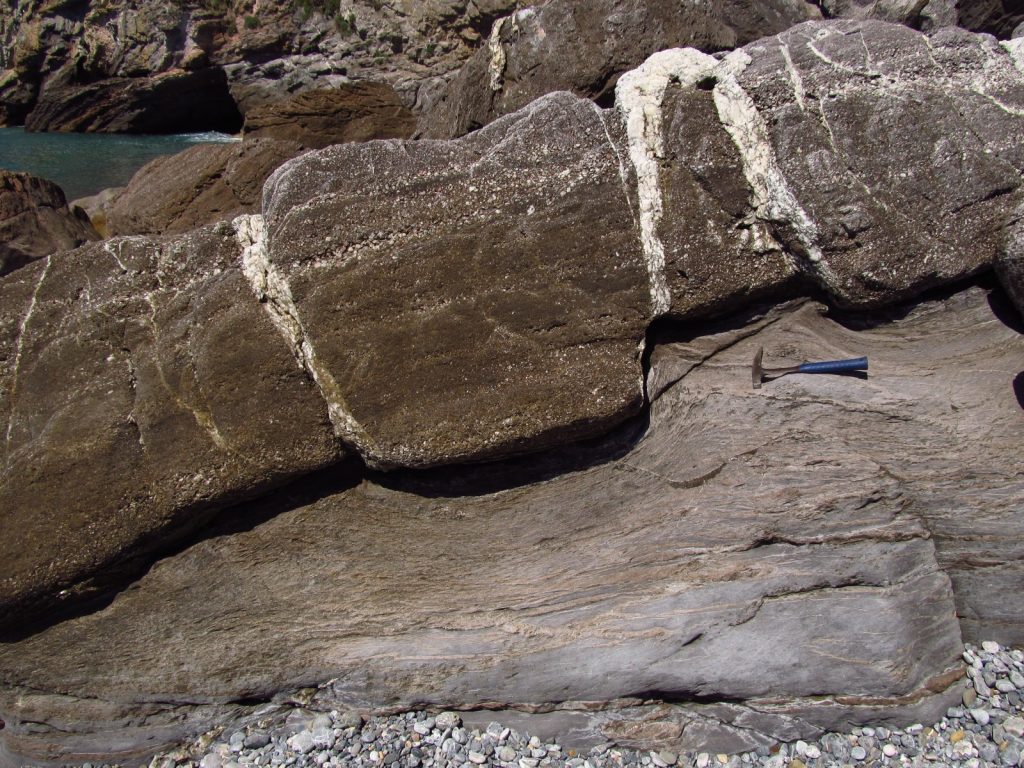
Symmetric boudinage of a quartz metaconglomerate in phyllites. The gaps of the boudins are filled with white quartz veins (Punta Bianca, La Spezia, Italy). Photo credits © Samuele Papeschi
Boudins can be symmetric, as in the example above, or asymmetric, as in the example below, where the boudinated layer is an amphibolite surrounded by weaker micaschists and quartzites. The boudins are separated by small scale sinistral shear fractures and systematically rotated clockwise. In this case, the geologist can obtain information about rock strength during deformation, but also on the sense of shear – which here is top to the right.
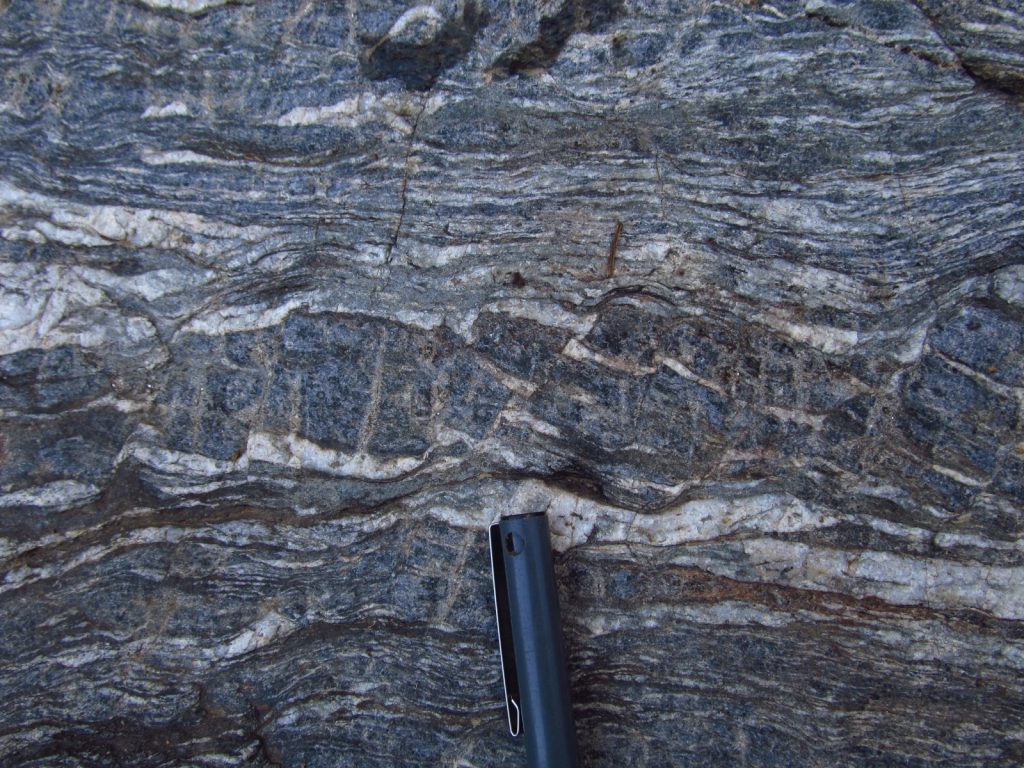
Asymmetric boudinage of amphibolite (the blackish layer) in dark grey biotite-micaschists and white quartzites (Elba Island, Italy). The amphibolite layers is fragmented by several, sinistral shear fractures. Photo credits © Samuele Papeschi
Rocks are not stretched in a single direction. Layers can also be flattened and stretched along 2 directions. When this occurs, you get fragmented boudins surrounded by 2 sets of fractures, as in the last example below. You already know that geologists like food analogies, so are you able to guess the name of this last structure? Yes, it is a chocolate tablet boudinage.
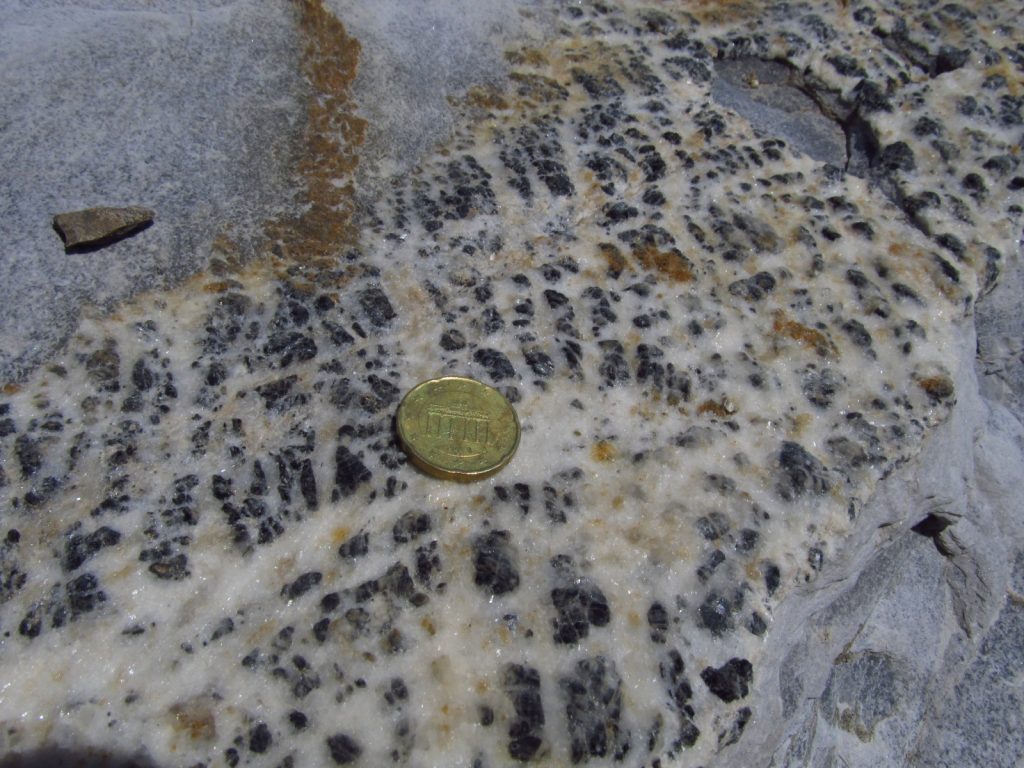
Chocolate tablet boudinage: a grey dolomite vein has been stretched along two, nearly-perpendicular, directions. The gaps between the boudins are filled by calcite deposited by fluids (Punta Bianca, La Spezia, Italy). Photo credits © Samuele Papeschi.
To sum it up, boudinage is a very important structure when studying rocks in the field, which gives us important insights about deformation, rock strength, pressure and temperature conditions and the sense of shear. Together with folds, lineations and foliations, it represents one of the most important features that can be described in the field.



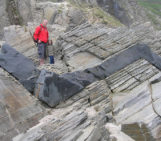

Reina Hiramatsu
It is a great blog to relearn about “Boudins. ” I’ve seen them in our Field Camp in Montana in the US when I was a student there. Our professor was telling us about this on the field, but not it the class. This is helpful to know more about the general idea of Boudins to me.
Karen
Please the Boudinage in Norway where is this please